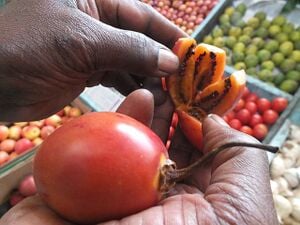Loading map...
{"format":"leaflet","minzoom":false,"maxzoom":false,"limit":99999,"offset":0,"link":"all","sort":[""],"order":[],"headers":"show","mainlabel":"","intro":"","outro":"","searchlabel":"\u003Cspan class=\"mw-ui-button\" style=\"margin: .5em 0;\"\u003EMore results\u003C/span\u003E","default":"","import-annotation":false,"width":"auto","height":"350px","centre":false,"title":"","label":"","icon":"","lines":[],"polygons":[],"circles":[],"rectangles":[],"copycoords":false,"static":false,"zoom":false,"defzoom":14,"layers":["OpenStreetMap"],"image layers":[],"overlays":[],"resizable":false,"fullscreen":false,"scrollwheelzoom":true,"cluster":true,"clustermaxzoom":20,"clusterzoomonclick":true,"clustermaxradius":80,"clusterspiderfy":true,"geojson":"","clicktarget":"","showtitle":true,"hidenamespace":true,"template":"","userparam":"","activeicon":"","pagelabel":false,"ajaxcoordproperty":"","ajaxquery":"","locations":[{"text":"\u003Cb\u003E\u003Ca href=\"/Bag_gardens\" title=\"Bag gardens\"\u003EBag gardens\u003C/a\u003E\u003C/b\u003E","title":"Bag gardens","link":"","lat":22.351113888888999525761391851119697093963623046875,"lon":78.6677416666669984124382608570158481597900390625,"icon":""},{"text":"\u003Cb\u003E\u003Ca href=\"/Bag_gardens\" title=\"Bag gardens\"\u003EBag gardens\u003C/a\u003E\u003C/b\u003E","title":"Bag gardens","link":"","lat":-28.81662222222200142596193472854793071746826171875,"lon":24.9916388888889997588194091804325580596923828125,"icon":""},{"text":"\u003Cb\u003E\u003Ca href=\"/Bag_gardens\" title=\"Bag gardens\"\u003EBag gardens\u003C/a\u003E\u003C/b\u003E","title":"Bag gardens","link":"","lat":-19.30223333333299962077944655902683734893798828125,"lon":34.91449722222200335863817599602043628692626953125,"icon":""},{"text":"\u003Cb\u003E\u003Ca href=\"/Bag_gardens\" title=\"Bag gardens\"\u003EBag gardens\u003C/a\u003E\u003C/b\u003E","title":"Bag gardens","link":"","lat":3.706286111111099845771832406171597540378570556640625,"lon":34.873488888888999781556776724755764007568359375,"icon":""},{"text":"\u003Cb\u003E\u003Ca href=\"/Bag_gardens\" title=\"Bag gardens\"\u003EBag gardens\u003C/a\u003E\u003C/b\u003E","title":"Bag gardens","link":"","lat":51.28120277777799884688647580333054065704345703125,"lon":3.75800277777779978549688166822306811809539794921875,"icon":""},{"text":"\u003Cb\u003E\u003Ca href=\"/Bag_gardens\" title=\"Bag gardens\"\u003EBag gardens\u003C/a\u003E\u003C/b\u003E","title":"Bag gardens","link":"","lat":-0.473522222222220012799454025298473425209522247314453125,"lon":39.59806944444400045313159353099763393402099609375,"icon":""},{"text":"\u003Cb\u003E\u003Ca href=\"/Bag_gardens\" title=\"Bag gardens\"\u003EBag gardens\u003C/a\u003E\u003C/b\u003E","title":"Bag gardens","link":"","lat":-23.32839722222200151691140490584075450897216796875,"lon":32.80660555555599700028324150480329990386962890625,"icon":""},{"text":"\u003Cb\u003E\u003Ca href=\"/CO2-Baited_CDC_Light_Trap\" title=\"CO2-Baited CDC Light Trap\"\u003ECO2-Baited CDC Light Trap\u003C/a\u003E\u003C/b\u003E","title":"CO2-Baited CDC Light Trap","link":"","lat":1.4419694444444000058780375184142030775547027587890625,"lon":38.4313972222220030516837141476571559906005859375,"icon":""},{"text":"\u003Cb\u003E\u003Ca href=\"/Fabric_Filter\" title=\"Fabric Filter\"\u003EFabric Filter\u003C/a\u003E\u003C/b\u003E","title":"Fabric Filter","link":"","lat":1.4419694444444000058780375184142030775547027587890625,"lon":38.4313972222220030516837141476571559906005859375,"icon":""},{"text":"\u003Cb\u003E\u003Ca href=\"/Hot_water_bottle_incubator\" title=\"Hot water bottle incubator\"\u003EHot water bottle incubator\u003C/a\u003E\u003C/b\u003E","title":"Hot water bottle incubator","link":"","lat":-1.283252777777800002212416075053624808788299560546875,"lon":36.8172444444440003508134395815432071685791015625,"icon":""},{"text":"\u003Cb\u003E\u003Ca href=\"/User:Kalitone\" title=\"User:Kalitone\"\u003EKalitone\u003C/a\u003E\u003C/b\u003E","title":"Kalitone","link":"","lat":40.07966111111100104835713864304125308990478515625,"lon":-89.4337277777780030874055228196084499359130859375,"icon":""},{"text":"\u003Cb\u003E\u003Ca href=\"/Kenya_Ceramic_Jiko\" title=\"Kenya Ceramic Jiko\"\u003EKenya Ceramic Jiko\u003C/a\u003E\u003C/b\u003E","title":"Kenya Ceramic Jiko","link":"","lat":-1.213641666666700036358861325425095856189727783203125,"lon":36.8793055555560016500749043188989162445068359375,"icon":""},{"text":"\u003Cb\u003E\u003Ca href=\"/Kenya_community_action\" title=\"Kenya community action\"\u003EKenya community action\u003C/a\u003E\u003C/b\u003E","title":"Kenya community action","link":"","lat":1.4419694444444000058780375184142030775547027587890625,"lon":38.4313972222220030516837141476571559906005859375,"icon":""},{"text":"\u003Cb\u003E\u003Ca href=\"/Kenya_community_activism_news\" title=\"Kenya community activism news\"\u003EKenya community activism news\u003C/a\u003E\u003C/b\u003E","title":"Kenya community activism news","link":"","lat":1.4419694444444000058780375184142030775547027587890625,"lon":38.4313972222220030516837141476571559906005859375,"icon":""},{"text":"\u003Cb\u003E\u003Ca href=\"/Kenya_community_resources\" title=\"Kenya community resources\"\u003EKenya community resources\u003C/a\u003E\u003C/b\u003E","title":"Kenya community resources","link":"","lat":1.4419694444444000058780375184142030775547027587890625,"lon":38.4313972222220030516837141476571559906005859375,"icon":""},{"text":"\u003Cb\u003E\u003Ca href=\"/Keramischer_Herd_aus_Kenia\" title=\"Keramischer Herd aus Kenia\"\u003EKeramischer Herd aus Kenia\u003C/a\u003E\u003C/b\u003E","title":"Keramischer Herd aus Kenia","link":"","lat":1.4419694444444000058780375184142030775547027587890625,"lon":38.4313972222220030516837141476571559906005859375,"icon":""},{"text":"\u003Cb\u003E\u003Ca href=\"/Kisii_Water_Filter\" title=\"Kisii Water Filter\"\u003EKisii Water Filter\u003C/a\u003E\u003C/b\u003E","title":"Kisii Water Filter","link":"","lat":1.4419694444444000058780375184142030775547027587890625,"lon":38.4313972222220030516837141476571559906005859375,"icon":""},{"text":"\u003Cb\u003E\u003Ca href=\"/User:Medical_Makers\" title=\"User:Medical Makers\"\u003EMedical Makers\u003C/a\u003E\u003C/b\u003E","title":"Medical Makers","link":"","lat":9.0643305555555997443661908619105815887451171875,"lon":7.4892972222222002898206483223475515842437744140625,"icon":""},{"text":"\u003Cb\u003E\u003Ca href=\"/User:Medical_Makers\" title=\"User:Medical Makers\"\u003EMedical Makers\u003C/a\u003E\u003C/b\u003E","title":"Medical Makers","link":"","lat":0.317713888888890017003774346449063159525394439697265625,"lon":32.58135277777800098419902496971189975738525390625,"icon":""},{"text":"\u003Cb\u003E\u003Ca href=\"/User:Medical_Makers\" title=\"User:Medical Makers\"\u003EMedical Makers\u003C/a\u003E\u003C/b\u003E","title":"Medical Makers","link":"","lat":-0.48181388888888998511816907921456731855869293212890625,"lon":30.1686861111110005140290013514459133148193359375,"icon":""},{"text":"\u003Cb\u003E\u003Ca href=\"/User:Medical_Makers\" title=\"User:Medical Makers\"\u003EMedical Makers\u003C/a\u003E\u003C/b\u003E","title":"Medical Makers","link":"","lat":47.6038333333330001551075838506221771240234375,"lon":-122.3300611111099982508676475845277309417724609375,"icon":""},{"text":"\u003Cb\u003E\u003Ca href=\"/User:Medical_Makers\" title=\"User:Medical Makers\"\u003EMedical Makers\u003C/a\u003E\u003C/b\u003E","title":"Medical Makers","link":"","lat":43.653480555556001263539656065404415130615234375,"lon":-79.38393333333300461163162253797054290771484375,"icon":""},{"text":"\u003Cb\u003E\u003Ca href=\"/User:Medical_Makers\" title=\"User:Medical Makers\"\u003EMedical Makers\u003C/a\u003E\u003C/b\u003E","title":"Medical Makers","link":"","lat":5.96141111111109989195711023057810962200164794921875,"lon":10.151650000000000062527760746888816356658935546875,"icon":""},{"text":"\u003Cb\u003E\u003Ca href=\"/User:Medical_Makers\" title=\"User:Medical Makers\"\u003EMedical Makers\u003C/a\u003E\u003C/b\u003E","title":"Medical Makers","link":"","lat":-2.5055833333333001888831859105266630649566650390625,"lon":28.859488888889000435256093624047935009002685546875,"icon":""},{"text":"\u003Cb\u003E\u003Ca href=\"/User:Medical_Makers\" title=\"User:Medical Makers\"\u003EMedical Makers\u003C/a\u003E\u003C/b\u003E","title":"Medical Makers","link":"","lat":9.035827777777800662306617596186697483062744140625,"lon":38.75241388888900218034905265085399150848388671875,"icon":""},{"text":"\u003Cb\u003E\u003Ca href=\"/User:Medical_Makers\" title=\"User:Medical Makers\"\u003EMedical Makers\u003C/a\u003E\u003C/b\u003E","title":"Medical Makers","link":"","lat":53.34938055555600300294827320612967014312744140625,"lon":-6.26055833333330014056627987883985042572021484375,"icon":""},{"text":"\u003Cb\u003E\u003Ca href=\"/User:Medical_Makers\" title=\"User:Medical Makers\"\u003EMedical Makers\u003C/a\u003E\u003C/b\u003E","title":"Medical Makers","link":"","lat":40.1906333333329968127145548351109027862548828125,"lon":116.41214444444000264411442913115024566650390625,"icon":""},{"text":"\u003Cb\u003E\u003Ca href=\"/User:Medical_Makers\" title=\"User:Medical Makers\"\u003EMedical Makers\u003C/a\u003E\u003C/b\u003E","title":"Medical Makers","link":"","lat":-1.3026138888889000622128833128954283893108367919921875,"lon":36.8288416666670030963359749875962734222412109375,"icon":""},{"text":"\u003Cb\u003E\u003Ca href=\"/Nairobi_community_action\" title=\"Nairobi community action\"\u003ENairobi community action\u003C/a\u003E\u003C/b\u003E","title":"Nairobi community action","link":"","lat":-1.349377777777799991554275038652122020721435546875,"lon":36.90414722222200083479037857614457607269287109375,"icon":""},{"text":"\u003Cb\u003E\u003Ca href=\"/Practical_Action/Tsetse_fly_management\" title=\"Practical Action/Tsetse fly management\"\u003EPractical Action/Tsetse fly management\u003C/a\u003E\u003C/b\u003E","title":"Practical Action/Tsetse fly management","link":"","lat":-2.6166000000000000369482222595252096652984619140625,"lon":38.14999999999999857891452847979962825775146484375,"icon":""},{"text":"\u003Cb\u003E\u003Ca href=\"/Social_issues_in_Kakuma_refugee_camp\" title=\"Social issues in Kakuma refugee camp\"\u003ESocial issues in Kakuma refugee camp\u003C/a\u003E\u003C/b\u003E","title":"Social issues in Kakuma refugee camp","link":"","lat":3.753338888888900104490176090621389448642730712890625,"lon":34.8251527777780012229413841851055622100830078125,"icon":""},{"text":"\u003Cb\u003E\u003Ca href=\"/Solar_Oven_Based_on_Mirrors\" title=\"Solar Oven Based on Mirrors\"\u003ESolar Oven Based on Mirrors\u003C/a\u003E\u003C/b\u003E","title":"Solar Oven Based on Mirrors","link":"","lat":11.5024333333330002204775155405513942241668701171875,"lon":17.757811111110999746642846730537712574005126953125,"icon":""},{"text":"\u003Cb\u003E\u003Ca href=\"/Solar_Oven_Based_on_Mirrors\" title=\"Solar Oven Based on Mirrors\"\u003ESolar Oven Based on Mirrors\u003C/a\u003E\u003C/b\u003E","title":"Solar Oven Based on Mirrors","link":"","lat":1.4419694444444000058780375184142030775547027587890625,"lon":38.4313972222220030516837141476571559906005859375,"icon":""},{"text":"\u003Cb\u003E\u003Ca href=\"/Solar_Oven_Based_on_Mirrors\" title=\"Solar Oven Based on Mirrors\"\u003ESolar Oven Based on Mirrors\u003C/a\u003E\u003C/b\u003E","title":"Solar Oven Based on Mirrors","link":"","lat":46.6033527777779994494267157278954982757568359375,"lon":1.88833333333329989045523689128458499908447265625,"icon":""}],"imageLayers":[]}

 Seven times size of Manhattan: the African tree-planting project making a difference, theguardian.com (Mar 13, 2024)
Seven times size of Manhattan: the African tree-planting project making a difference, theguardian.com (Mar 13, 2024)  Food forests grown by Nile Basin farmers restore wetlands and bring back a turtle, news.mongabay.com (Feb 28, 2024)
Food forests grown by Nile Basin farmers restore wetlands and bring back a turtle, news.mongabay.com (Feb 28, 2024)  ‘Our contribution to a cleaner world’: How Kenya found an extraordinary power source beneath its feet, theguardian.com (Jan 25, 2024)
‘Our contribution to a cleaner world’: How Kenya found an extraordinary power source beneath its feet, theguardian.com (Jan 25, 2024) 


